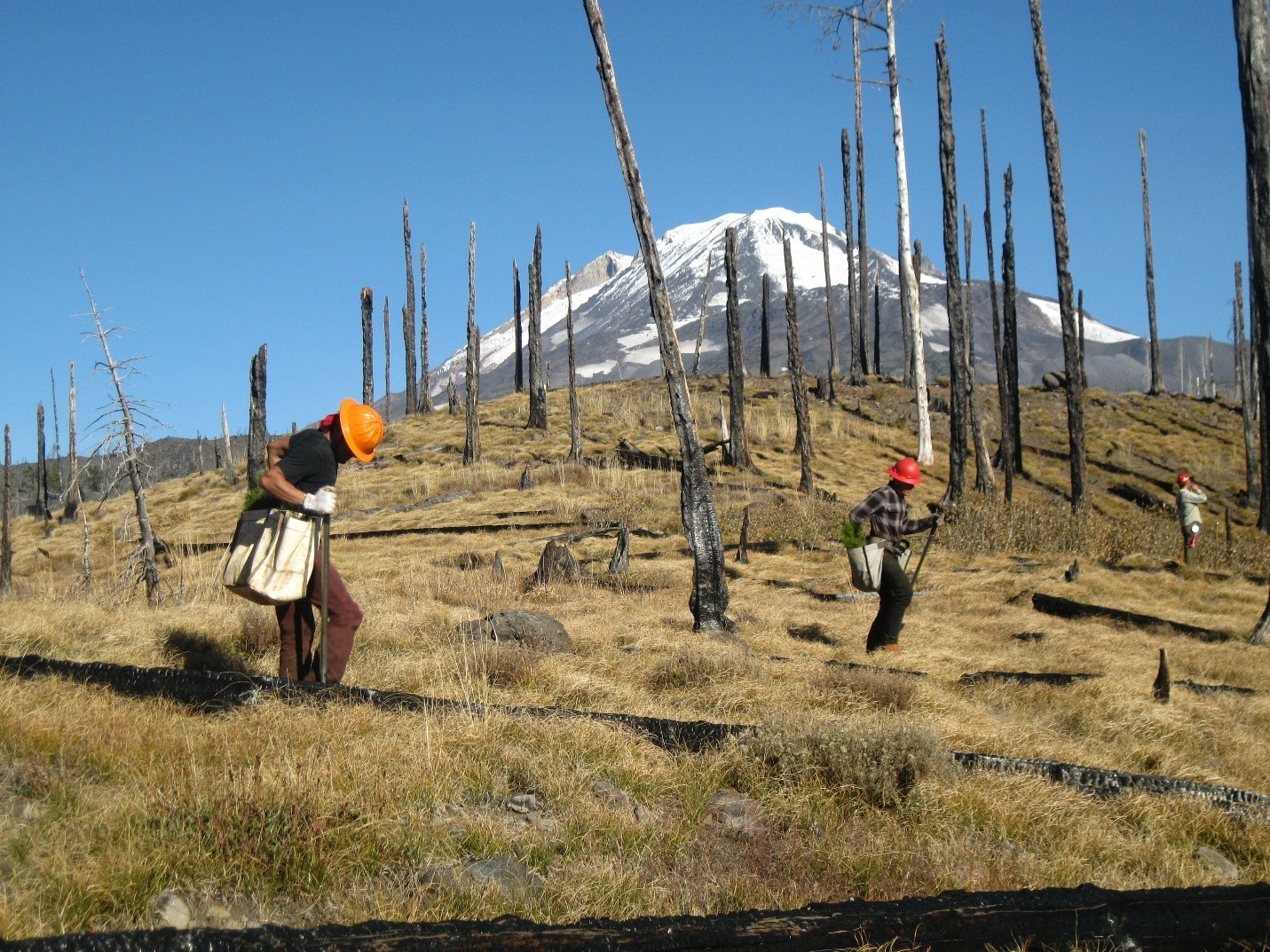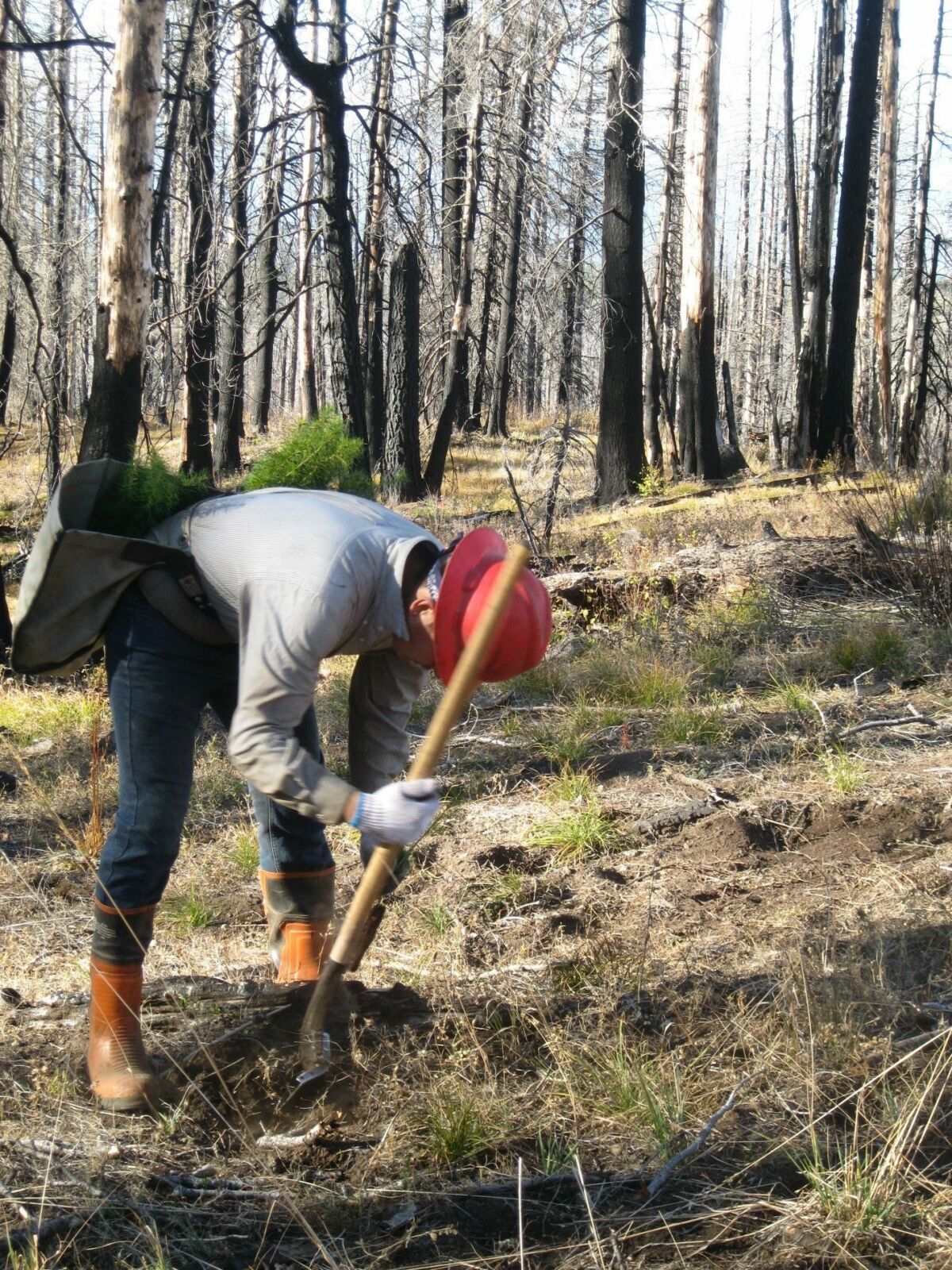Over the past two decades, several high-intensity wildfires on Gifford Pinchot’s Mount Adams have left thousands of acres without tree cover. A multi-year planting effort is helping to revive the forest and improve riparian health of the mountain’s White Salmon River upper watershed.
Gifford Pinchot National Forest covers an extensive 1.3 million acres in southwest Washington state. Jutting out of the forest is Mount Adams, the state’s second highest peak and largest active volcano (though its last eruption was over a thousand years ago). Mount Adams is home to the headwaters of the White Salmon River, a nationally designated Wild and Scenic River. A tributary of the Columbia River, the White Salmon is one of the region’s best rainbow trout fisheries and draws whitewater enthusiasts from nearby Portland, Oregon, and across the globe.
The deep forests of the Gifford Pinchot are not immune to the recent wildfires burning in the Pacific Northwest. Since 2008, several large wildfires have occurred on Mount Adams, deforesting more than 18,000 acres of National Forest land. Beetle kill and dense forest conditions from decades of fire suppression caused the fires to burn so severely that large areas were left treeless, without a seed source to fuel new growth. Our U.S. Forest Service partners estimate that these sites would remain in this state for more than 20 years without active replanting.

With such extensive forest and wildlife habitat loss, the agency quickly initiated a multi-year plan to jumpstart forest recovery. The NFF joined these efforts, planting nearly 200,000 mixed conifer seedlings on 1,500 acres in the White Salmon headwaters between 2018 and 2020. Like all of our projects, local forestry experts from the Forest Service determined the right species to plant. They chose a mix of long-lived native conifers - ponderosa pine, Douglas-fir, and western larch, among others – that are unlikely to naturally regenerate on the burn scars and have a high resistance to fire, drought, and insects.

Planting the best possible mix of native seedlings will help revive the forest and support the health of the White Salmon River. The White Salmon lies in the midst of the historical lands of the Yakama Nation, and the Yakama continue to live, fish, hunt, and gather food and medicines across the river.
The Yakama Nation and many other partners are also working to restore the ecological health of this significant landscape. An important step toward restoring its health was the demolition of the Condit Dam, which blocked fish passage for nearly 100 years. In 2011, a large blast began the destruction of the dam, reconnecting the White Salmon to the Columbia River and opening up 33 miles of fish habitat.
As our seedlings grow into tall trees, they will help keep the reconnected river healthy, stabilizing denuded slopes and enhancing water quantity and quality. Trees are critical to water infiltration in the White Salmon’s upper watershed. There, they recharge springs and groundwater that feed the river with cold, high volume flows, perfect for salmon and trout. On land, trees will provide habitat for the area’s many types of wildlife, including black bears, cougars, elk, and various raptors.
Support for this work came from our generous tree-planting donors and corporate partners Black Forest and Patagonia Cerveza.
All photos except header by the USDA Forest Service. Header photo by Tom Hilton.

